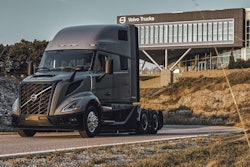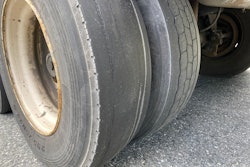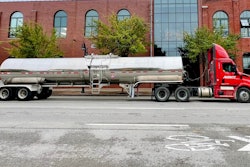Research conducted by Noregon found there are nearly 300,000 rooftops in North America where medium and heavy-duty commercial vehicles are serviced, repaired and maintained. Freight rates haven’t been “good” for quite some time, and technology is expensive but for tech like diagnostic tools – where RIO is easily tabulated in how it affects downtime – there will always be a budget. A recently released whitepaper compiled by Noregon titled Unpacking the Commercial Vehicle Diagnostics Industry, found that tech to tool ratio is coming down and that’s thanks to a couple things: 1) more tools in the workplace and 2) fewer technicians.
Contents of this video
00:00 10-44 intro
00:24 Technician shortage
02:56 OEM and aftermarket electronic diagnostic tools
04:20 Tools with multiple functions
05:11 Choosing the right tool
06:44 Remote diagnostics
07:59 Effective trouble shooting
10:10 Movement away from static interval-based maintenance
11:37 Automation
Speaker 1:
Despite overall poor market economics, fleets and repair service centers continue to invest in diagnostic tools and technologies. You're watching CCJs 10 44, a weekly episode that brings you the latest trucking industry news and updates from the editors of cj. Don't forget to subscribe and hit the bell for notification so you'll never miss an installment of 10 44. Hey everybody, welcome back. I'm Jason Cannon and my co-host, as always is Matt Cope. Research conducted by Nor found that there are nearly 300,000 rooftops in North America where medium and heavy duty commercial vehicles are serviced, repaired, and maintained.
Speaker 2:
Freight rates haven't been good for quite some time, and technology's expensive. But for tech like diagnostic tools where ROI is easily tabulated and how it affects downtime, there will always be a budget.
Speaker 1:
A recently released white paper compiled by noon titled Unpacking the Commercial Vehicle Diagnostics Industry, found that tech to tool ratio is coming down, and that's thanks to a couple of things. One, there's more tools in the workplace, and two, there's fewer technicians. One of those things is good. The other one's really
Speaker 3:
Bad. If you talk to anybody in our industry and ask them what's the biggest challenge this industry is facing? Forget about fleets and shops for a second, and you'll hear from them, it's driver shortage, right? If you had gone back to 1910s and asked anybody in the industry, what's the biggest challenge in trucking? They would've still said driver shortage. The thing is, this has always been the challenge, but what people don't realize are ticking time bomb right now is technician shortage. Trucks are getting more and more complicated, more advanced sensors, advanced equipment, advanced systems, components, modules in trucking. So trucks are getting more and more complicated bumper to bumper, but we don't have the skilled technicians to service and maintain these trucks. In fact, there's a shortage of skilled technicians, not enough skilled technicians, young talent joining this particular industry. That is the through line that cuts through the three top three challenges that I just mentioned, which is hiring technicians, accurate and effective, troubleshooting, diagnostics, reducing downtime, as well as dwell time in shops.
So the through line that goes through all these three is technician shortage and trucks getting more and more complicated, and that's the reason why electronic scan tools have become so popular and have gained such rapid traction for the last several years. And if you take a look at 2016, around 2016, for every six diesel technicians in North America, there was one diagnostic tool, electronic scan tool. Fast forward to 2024. Last year it was down to 2.8, which means for every 2.8 technicians there was one scan tool. This year we're forecasting it to go down to 2.5. So that's how fast the demand for electronic diagnostic tools is increasing in response to the challenges that the shops and fleets are facing, which is hiring technicians accurate and effective, troubleshooting and reducing dwell time and downtime.
Speaker 2:
Despite the labor shortage, shops and repair facilities continue to invest in maintenance tech and plan to continue to invest in it. Aftermarket diagnostic tools make up about 40% of the market right now, but nor forecast a 50 50 split between OE and aftermarket tools by 2028.
Speaker 3:
So what we found is about 35% of all surveyed shop respondents and fleet respondents said that they're going to significantly increase the number of tools that they're using in their shops. So that is one data point. The other data point is yes, there's a technician shortage, but all IRFs and dealerships are working overnight to service and maintain vehicles and getting them out of their shops so that they can handle more business. So to manage that volume, they require faster throughput. They require faster, quicker, more effective diagnostics, and that's why you have the demand for electronics diagnostic tools. Now, keep in mind there are two kinds of electronic diagnostic tools. You have OE tools and you have aftermarket tools. Problem with OE tools is while they go very deep and wide, but they're only tied to specific name plates of equipment. And most fleets, as you know, are mixed fleets, and that's why you need diagnostic tools that offer coverage for all makes, all models and all model leaders, and that's why the aftermarket has been gaining more and more market share relative to the OE market. For tools,
Speaker 1:
The biggest challenge for fleets is finding the right tool that can do multiple things.
Speaker 3:
Engine is the one of the most important systems or subsystems in a vehicle. So engine coverage is pretty standard across OE or aftermarket tools. It is relatively similar, but where a fleet should focus and where they're challenged is, what else can I get? In addition to engines, you have powertrain systems, chassis systems, brakes, transmissions, A BS, systems, electronics, a DAS, so Aftertreatment systems. So you need to choose a tool that gives you coverage of multiple vehicle systems, bumper to bumper, possibly even trailers, possibly even off high equipment. You'll be surprised that of all our customers that we support in the fleet community, almost 20, 25% also service and maintain off highway equipment. So off highway coverage is important
Speaker 2:
With so many options on the market. How does a fleet decide which diagnostic tool is the right one?
Speaker 3:
So obviously the technology superiority is number one, coverage, right? That tool should cover as many systems, components, equipment, vehicle models make years as it possibly can. That's the number one consideration. Once you have attained that, the next item in the checklist is what kind of training and customer support does that solution provider offer? Number three is, do they also have remote diagnostic offering so that I can not only rely on the tools when the vehicle comes to the shop, I can also remotely diagnose a problem before it becomes a bigger problem. Number four is obviously isn't made in America. Is it local? There are some companies that are out there that are from different other continents and markets where many, many fleets don't want their data to be shared with such entities. Obviously, it's very important that the company that you're choosing continues to evolve its product.
Not only offers you just an diagnostic tool, but also fault guidance, but also technicians as service where if you have a problem, we just call them and they can walk you through the process. Then there is a possibility that diagnostic tool provider has shop automation systems that basically bring software solutions to the shop to manage their daily workflow. In which case, the question is if that is the case, is the diagnostic tool interface with the shop automation system so that the moment the truck comes in, the moment the diagnostics is performed, everything else else auto populates, that saves further time and reduces develop time. So there's so many different considerations to keep in mind while choosing the right diagnostic tool provider
Speaker 1:
And emerging importance is the ability to access diagnostic information when the truck isn't in the shop. Because under ideal scenarios, the truck and trailer is on the road far more than it's in for service,
Speaker 3:
While you can service and maintain vehicles under a rooftop. What about vehicles when they're operating in highways? Can remote diagnostics be possible? Can your solution provider offer you remote diagnostics where you can not only remotely diagnose a vehicle, but also conduct let's say remote regions or conduct bidirectional testing or conduct over their updates? So telematics connectivity and through that connectivity, delivering and dispensing remote diagnostics, that is also important. So there are a lot of considerations of fleet maintenance manager. Fleet manager must focus on to choose the right tool or the right solution provider. 70% of fleets that have used remote diagnostics, they want to increase the usage of remote diagnostics as per hour. Recent survey, and we found amongst fleet maintenance manager, the number one reason they choose telematics is not track and trace, it's not anything else. It's remote diagnostics. So this is becoming very, very important where you can now remotely diagnose a vehicle without the need to bring the vehicle under a rooftop for service and maintenance.
Speaker 2:
The top challenge for fleets according to nor is accurate and effective troubleshooting. And that's because fleets are pressured to catch a rising cost of operation.
Speaker 3:
It's coming from the fact that if you take a look at TCU for fleets over the last four or five years, you see a TRI does that TCU analysis every year and they publish the results. And you'll see that there are certain cost components in TCU. In fact, TCU has gone up over the last four years, year on year, right? But there are certain cost components in TCO. In fact, most cost components of TCO that fleet managers or maintenance managers cannot influence them. They have no control over them. For example, fuel costs, it's companies like Chevron or ExxonMobil, all those kind of oil majors that dictate fuel cost. Nothing you can do about it. If you're a fleet manager, truck and trailer payments, lease or finance payments, the truck OEMs control that influence it. Insurance companies, they influence premiums that they pay. Government influences, permits and licenses and tolls that fleet managers pay.
Tire OEMs control tire prices or influence tire prices. The free market for drivers influences driver wages and driver benefits. The only one lever that the fleet managers and maintenance managers have in their control that they can use to reduce TCO is repair and maintenance cost, right? So if all the cost elements of TCO, that's the one element that they can influence and control, unfortunately that's the one component that has gone up 36% over the last four years and now represents 9% of total TCO. So it is become very important to accurately diagnose a problem so that you don't incur further downtime or dwell time or downstream downtime, dwell time, and you have to do it fast enough so that you can maintain throughput so that you can quickly service and maintain more and more vehicles. Because the average age of class eight trucks has increased over the last few years, and with older vehicles, you need more frequent service and maintenance. So the burden on fleet managers is how do I deal with this volume of service and maintenance? That's why you need tools that can accurately diagnose a problem and quickly diagnose a problem so that you can handle more volume in your shops.
Speaker 1:
Gon also uncovered a couple emerging trends among fleets. The first thing is something we're seeing industry-wide, and that's a movement away from static interval based maintenance. This
Speaker 3:
Is something we're seeing from large fleets. When I say large fleets, these are fleets that have thousands of trucks and trailers. The rising demand for condition-based maintenance versus scheduled maintenance that we are seeing now, has it reached critical mass? No. But we are seeing some large fleets asking questions such as our trucks don't operate certain duty cycles where I have to change a system or component every so many hours or so many miles. So can we not do it based on the condition of the system or component versus doing it on a pre manner? And that is interesting because it is possible now with data and analytics to kind of offer that kind of solution. Now, I'll give you an example. Let's say you have a package delivery car or truck that is operating, let's say in Colorado versus in New York City. The truck that is, let's say supporting Empire State Building, it goes in there in the morning, stands there for four hours, and then moves to the next destination versus a truck that is, let's say in Denver, Colorado doing stop and go, stop and go where the starter Alterna requires more frequent service and maintenance for that truck while not the one that's operating in New York City.
So why should I then replace the starter alternator for the truck in New York City, the same interval as in Denver City? So those are the kind of questions that are now starting to come up, and I thought that was an interesting thing.
Speaker 2:
The second emerging trend shouldn't be a surprise. Automation.
Speaker 3:
There are a lot of independent repair facilities and fleets that are still using pen and paper for workflow management in shops and maintenance shops. And so now because these shops have been stretched thin and they're now challenged in the sense that you have rising complexity of trucks and rising penetration of proliferation of electronic scan tools, they are now forced to look at workflow automation solutions. The question they keep asking is, yeah, we'll choose a software solution, but if the diagnostics is performed by a technician and then he has to walk to this computer and then enter the findings, that still doesn't save us a lot of time. So the question that is emerging now is, can there ever be a future where electronic scan tools will be directly interfaced with shop automation solutions? Demand for both are there. On one side, we are seeing demand, as you saw we discussed earlier, the demand for electronic scan tools is increasing, but we are also seeing the demand for shop automation solutions increasing. At some point these will intersect and newer realities will emerge. That's it for this week's 10 44.
Speaker 1:
You can read more on ccj digital.com. While you're there, sign up for our newsletter and stay up to date on the latest in trucking industry news and trends. If you have any questions or feedback, please let us know in the comments below. Don't forget to subscribe and hit the bell for notifications so you can catch us again next week.











